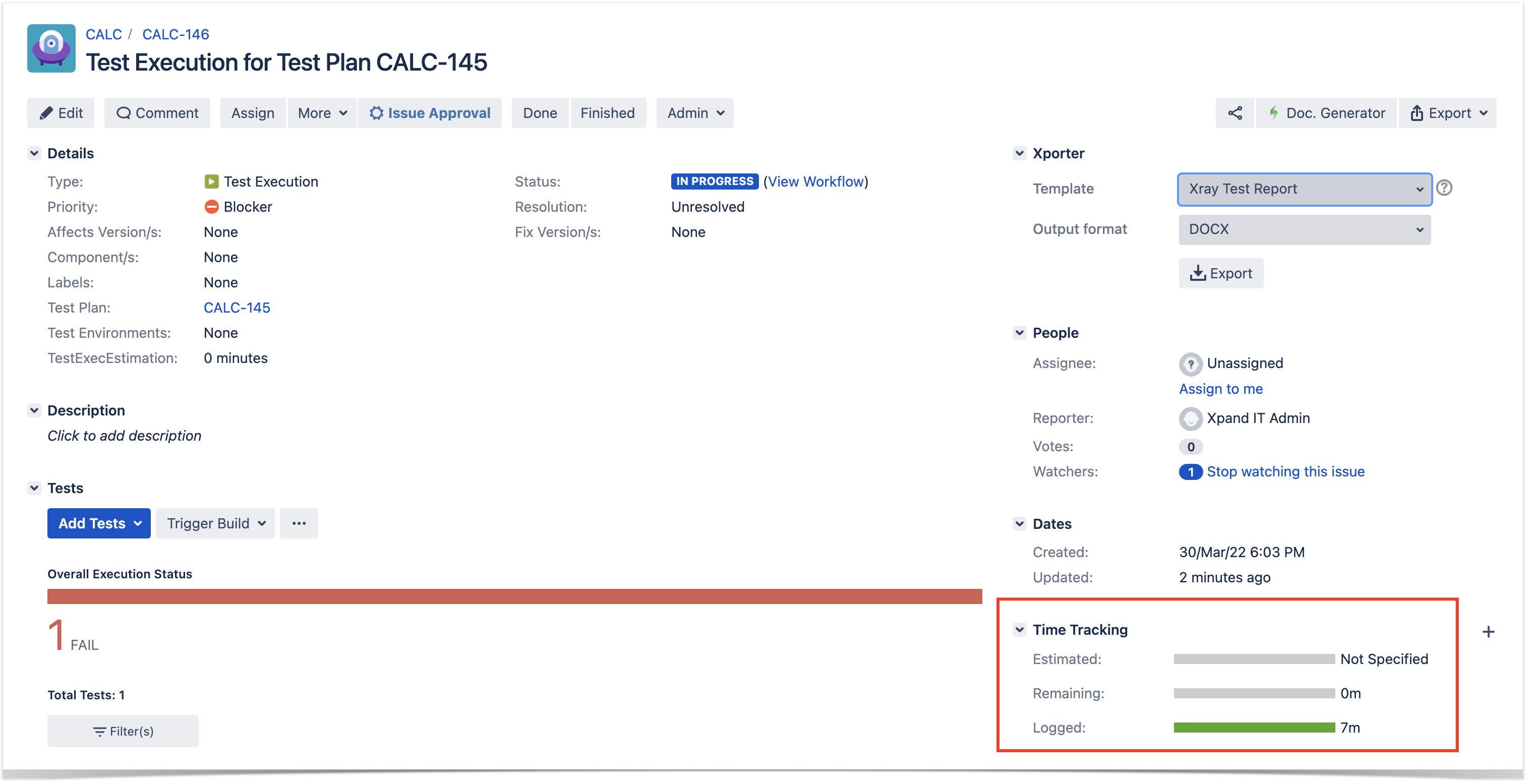Page History
...
This means that you are able to to manually log time on those issues using Jira out-of-the-box. If you have some other apps or integrations that are based on this the Time Tracking field, then you are going to have it available there also.
...
Concerning the logged time, for time tracking purpose, the time that you spend executing some Test Run is not logged automatically in Jira; you can manually log it on the Test Execution issue though, either from the Test Run execution screen using a logging shortcut/Timer or from the corresponding Test Execution issue using the standard time tracking mechanism from Jira.
Remember that no matter what, if logged, this time is always logged on the Test Execution issue and is available on the related "Time Spent" custom field. It's not mandatory to log time; use it, if you need it.
...
In sum, the elapsed time (which is calculated automatically from the Timer) and the actual logged time are two different things. You can choose to log exactly the displayed elapsed time, report another value or even not log anything.toc
Possible usage scenarios for logging time
...
| Issue type | Purpose | Notes |
|---|---|---|
| Test |
| using "estimated execution time" may be more adequate; however if you choose that approach, you may have to decide where to report the estimation for the specification (e.g. in a Test Set or in some specification task) |
| Pre-Condition |
| see notes for Test issue |
| Test Set | estimated time for specifying all the Tests being grouped within this Test Set | |
| (Sub)Test Execution | estimated time for running all related Test Runs | |
| Test Plan |
| your estimated time aim for the Test Plan should match the aim of the logged time |
Comparisons of estimates vs elapsed time
At individual Test Run level, original estimated vs effective elapsed time
...
In this case we assume people log time on the Test Execution issues which we want to compare against the estimations made on the Test issues.
In order to obtain the "the sum of the estimated times for each Test", we can follow the same approach we did in 2) above for creating a calculated custom field with its value.
...
- Use the "Original Estimate" on Test issues to estimate the execution duration, so that you can make some calculations based on it.
- If you're doing testing services, using time estimates for Test Sets may be useful if you want to have an idea of the associated effort of the Tests you aim to implement related with that Test Set.
- The Timer on the execution screen records the elapsed time; you may pause it whenever you need it; this elapsed time is not logged by default, and may be different from the logged time as mentioned ahead.
- Log execution time in Test Executions right after you finish a given Test Run, using the log time shortcut on the Test Run execution screen, which will pick by default the elapsed time recorded with the Timer; you may also log a custom elapsed time.
- On the Test Executions List report, or if listing Test Executions issue issues elsewhere, use the "Time Spent" custom field to show the logged time on the Test Execution.



